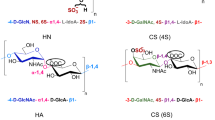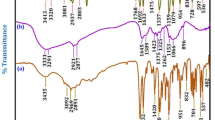Abstract
ACRIDINE orange, a basic fluorochrome dye, stains the basophilic constituents of cells, such as nucleic acids (De Bruyn et al.1, Morthland et al.2, Armstrong3) and acid mucopolysaccharides (Hicks and Matthaei4, and Kuyper5), but aqueous solutions of this dye do not stain glycogen, paramylum and polysaccharides of the cyst wall of protozoa. All these polysaccharides can be stained with acridine orange after sulphation. Several sulphation techniques have been tried, and the best results have been obtained with chlorosulphonic acid in dry pyridine (Kramer and Windrum6). For the sulphation of glycogen 5 min treatment at 65° C is enough, whereas paramylum bodies and cyst wall require 10–15 min treatment at 70°–75° C.
This is a preview of subscription content, access via your institution
Access options
Subscribe to this journal
Receive 51 print issues and online access
$199.00 per year
only $3.90 per issue
Buy this article
- Purchase on SpringerLink
- Instant access to full article PDF
Prices may be subject to local taxes which are calculated during checkout
Similar content being viewed by others
References
De Bruyn, P. P. H., Robertson, R. C., and Farr, R. S., Anat. Rec., 108, 279 (1950).
Morthland, F. W., De Bruyn, P. P. H., and Smith, N. H., Exp. Cell Res., 7, 201 (1954).
Armstrong, J. A., Exp. Cell Res., 11, 640 (1956).
Hicks, J. D., and Matthaei, E., J. Path Bact., 70, 1 (1958).
Kuyper, C. M. A., Exp. Cell Res., 13, 198 (1957).
Kramer, H., and Windrum, G. M., J. Histochem. Cytochem., 2, 196 (1955).
Author information
Authors and Affiliations
Rights and permissions
About this article
Cite this article
DUTTA, G. Demonstration of Neutral Polysaccharides with Fluorescence Microscopy using Acridine Orange. Nature 205, 712 (1965). https://doi.org/10.1038/205712a0
Published:
Issue date:
DOI: https://doi.org/10.1038/205712a0



